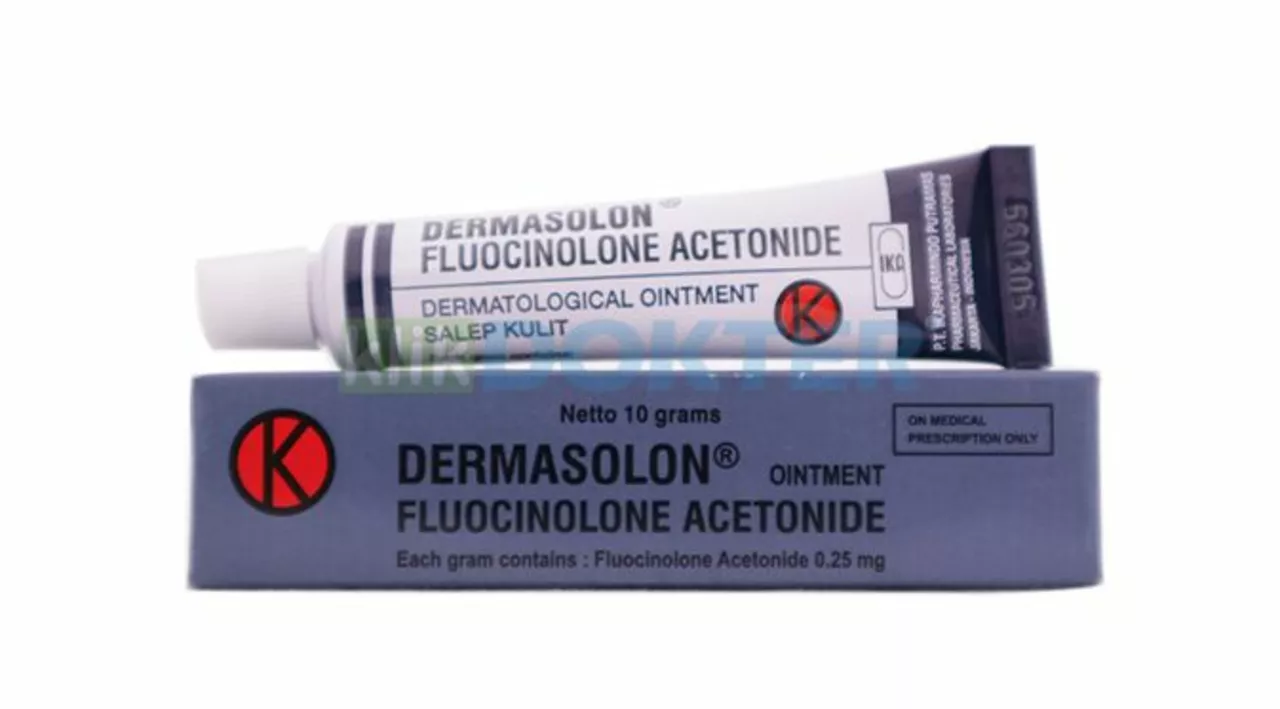Fluocinolone acetonide: what it is and why it’s used
Fluocinolone acetonide is a steroid medicine used to calm inflammation. You’ll find it as topical creams and ointments for skin, ear/eye preparations, and even as a tiny slow-release eye implant (Iluvien). For some people a single implant can reduce inflammation in the eye for months to years — that’s why it’s talked about a lot in eye care.
Where you’ll see it used
People use fluocinolone acetonide for things like eczema, dermatitis, certain allergic rashes, inflammatory ear or eye conditions, and chronic retinal inflammation. Topical forms help skin problems; ophthalmic forms or implants are aimed at reducing internal eye inflammation or diabetic macular edema. Brands you might hear about include Synalar (topical) and Iluvien (intravitreal implant).
How to use it safely
Follow these simple rules and you’ll reduce risks:
- Use the lowest effective amount for the shortest time your doctor recommends.
- Apply a thin layer to the affected skin only; don’t cover with airtight dressings unless told to do so.
- Don’t use strong topical steroids on the face, groin, or armpits for long periods — the skin is thinner there and reacts more.
- If you have an eye implant or eye drops, keep regular follow-up visits so your eye doctor can check pressure and the lens.
- Wash your hands after applying and avoid getting topical steroid into the eyes unless it’s an eye formulation.
If you’re pregnant, breastfeeding, or treating a child, talk to your clinician before use. For implants or eye injections, expect a clear schedule for monitoring.
What to watch for: skin thinning, stretch marks, easy bruising, or new acne where you apply a topical steroid. For eye treatments, watch for rising eye pressure, new floaters, blurred vision, or pain — those need quick attention.
Interactions are usually about combined steroid exposure: using multiple steroid products (pills plus creams, for example) raises the chance of side effects. Always tell your prescriber about other steroid medicines you take.
Storage is easy: keep creams and ointments at room temperature and out of reach of kids. For implants and injections, your clinic will handle storage and timing.
When to call your doctor: the rash gets worse, signs of skin infection (increasing redness, warmth, pus), unexpected vision changes, or new severe side effects. If a steroid was prescribed for a long time and you stop suddenly, ask your doctor about tapering — they’ll tell you whether you need a gradual reduction.
Want help weighing pros and cons? Ask your pharmacist or prescriber for specifics about the product you were given — they can match the dose and form to your condition and monitoring needs.
3
Fluocinolone Acetonide: A Patient's Experience
I recently had the opportunity to use Fluocinolone Acetonide for my skin condition, and I wanted to share my experience with others. This powerful corticosteroid cream provided quick relief from the itching and inflammation I was experiencing. I applied it as directed by my doctor, and within just a few days, I saw a significant improvement in my skin's appearance. I did experience some mild side effects, such as skin dryness, but these were manageable. Overall, I found Fluocinolone Acetonide to be an effective treatment for my skin condition and would recommend it to others dealing with similar issues.
Latest Posts
Popular Posts
-
 Generational Differences: How Age Shapes Attitudes Toward Generic Medications
Generational Differences: How Age Shapes Attitudes Toward Generic Medications
-
 Amyotrophic Lateral Sclerosis: How Riluzole Slows Neurodegeneration and Extends Life
Amyotrophic Lateral Sclerosis: How Riluzole Slows Neurodegeneration and Extends Life
-
 Antipsychotics and Stroke Risk in Seniors with Dementia: What You Need to Know
Antipsychotics and Stroke Risk in Seniors with Dementia: What You Need to Know
-
 Medication-Induced Drowsiness: What Causes It and How to Manage It
Medication-Induced Drowsiness: What Causes It and How to Manage It
-
 Chronic Pancreatitis: Managing Pain, Enzyme Therapy, and Nutrition
Chronic Pancreatitis: Managing Pain, Enzyme Therapy, and Nutrition



